2024-01-04 Thu
■ #5365. 「インドの英語」をめぐって榎木薗鉄也先生と対談 --- 大石晴美(編)『World Englishes 入門』(昭和堂,2023年)の第4章 [voicy][heldio][review][notice][world_englishes][we_nyumon][indian_english][esl]
年末の12月29日,10月に昭和堂から出版された『World Englishes 入門』を紹介する Voicy heldio のシリーズ企画の一環として「#942. 著者と語る『World Englishes 入門』(昭和堂,2023年) --- 榎木薗鉄也先生とのインドの英語をめぐる対談」を配信しました.榎木薗先生(元中京大学)は,本書の第4章「インドの英語」の著者の1人です(もう1方は加藤拓由先生).33分ほどの音声コンテンツとなっています.お時間のあるときにお聴きください.
今回ご紹介いただいた第4章「インドの英語」 (pp. 69--84) は,以下の構成となっています.章末には「研究テーマ」コーナーと参考文献が付されています.
1 インドの地理と言語的多様性
コラム インドの武術とアーユルヴェーダー
2 インドの教育と英語
(1) 教育制度
(2) 三言語方式語彙
(3) インドと日本の初等英語教育
- 文字の積極的活用
- 多様な活動中心の教材
- 書く事への段階的な指導
コラム ガンジーと孫娘の素敵なエピソード
3 インドの未来と英語教育
コラム インド人と映画
4 インド英語の特徴
(1) 発音
(2) 語彙
(3) 文法
(4) 表現
インドでは日本や韓国とは比べものにならないくらい英語が出世のための必須のスキルとして認識されており,英語教育の過熱化が激しく起こっていることについては考えさせられました.グローバルサウスの盟主とされ,世界で最も英語話者人口が多いインドと,この国の言語事情については,今後も目を光らせていく必要がありそうです.インド英語については hellog より indian_english の記事群もご参照ください.
『World Englishes 入門』関連の heldio 配信回を以下にまとめておきます.関連の hellog 記事については we_nyumon よりどうぞ.
・ 「#865. 世界英語のお薦め本の紹介 --- 大石晴美(編)『World Englishes 入門』(昭和堂,2023年)
・ 「#869. 著者と語る『World Englishes 入門』(昭和堂,2023年) --- 和田忍さんとの対談」
・ 「#883. 著者と語る『World Englishes 入門』(昭和堂,2023年) --- 今村洋美先生とのアメリカ・カナダ英語をめぐる対談」
・ 「#901. 著者と語る『World Englishes 入門』(昭和堂,2023年) --- 梅谷博之先生とのモンゴルの英語をめぐる対談」
・ 「#925. 著者と語る『World Englishes 入門』(昭和堂,2023年) --- 小林めぐみ先生との韓国の英語をめぐる対談」
・ 「#942. 著者と語る『World Englishes 入門』(昭和堂,2023年) --- 榎木薗鉄也先生とのインドの英語をめぐる対談」
近日中に,榎木薗鉄也先生との対談のアフタートークも heldio よりお届けする予定です.ぜひそちらも楽しみにしていただければ.
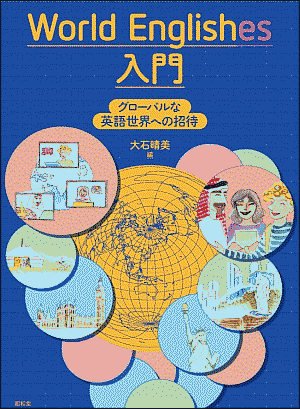
・ 大石 晴美(編) 『World Englishes 入門』 昭和堂,2023年.
2023-10-05 Thu
■ #5274. 19世紀のイングランド英語を研究する意義 [lmode][sociolinguistics][world_englishes][variety][standardisation][enl][esl]
19世紀のイングランド英語を研究するというのはどういうことか.確かに100年以上前の英語ではあるにせよ,歴史と呼ぶには新しい感じがするし,実際ほぼ普通に読むことができる.19世紀の英文学や英国文化に関心があるというのであれば分かるが,19世紀の英語そのものに関心が湧くというのはどういうことか.
先日,逝去された英語史の大家 Manfred Görlach は,上記のように評価されることが多い19世紀のイングランド英語に真っ向から立ち向かい,1999年に一冊の本を著わした.ずばり English in Nineteenth-Century England: An Introduction である.この本の冒頭の節は "Motivations for the present book" である.まず前口上を引用しよう (1) .
Interest in the history of English has recently focused on more modern periods than the traditionally favoured ones of OE and ME. However, whereas EModE is becoming a well-researched field, the investigation of the language after 1700 has been more patchy. The 18th century has, for various reasons, received more attention than the period between 1800 and 1900.
No comprehensive description of 19th-century English --- in particular that of England --- has ever been attempted. And yet such a study promises to yield important insights, for the following reasons:
そして19世紀のイングランド英語に注目すべき3つの理由が続く (1--5) .
(1) The sociolinguistic foundations of PDE were laid in a period when the population expanded tremendously, especially in the industrial urban centres . . . , when the standard form of the language (St E) spread from the limited number of 'refined' speakers in the 18th century to a considerable section of the Victorian middle classes, and when general education began to level speech forms to an extent that is impossible to imagine for earlier periods.
(2) Comparisons between varieties of English in England and overseas are likely to provide evidence of the drifting apart of the colonial Englishes in spite of the retarding influences of British administration, the schools, and the influence of the high prestige of London English on educated speakers world-wide. Moreover, a description of the BrE of the time is a necessary precondition for evaluating the British linguistic input in overseas Englishes --- in regions where English is a native language (= ENL), like the American West, Upper Canada, Australia and New Zealand, the Cape and Natal, and in the great number of varieties of English used as a second language (= ESL) in Africa and Asia.
(3) A comparison of English in England with standard languages on the continent may well permit interlinguistic insights into parallels and differences in development within the framework of an increasingly similar West European material culture. Such comparisons might also prompt new questions and the application of new methods in cases where it has proved fruitful to look at sociolinguistic conditions in one culture which have been neglected in another.
この3つの視点はざっくり次のような趣旨と読めるだろう.
(1) 20世紀以降のイングランド英語を生み出した土壌を知る
(2) 世界に拡散した ENL や ESL の種を知る
(3) ヨーロッパの諸言語の社会言語学的事情と比較対照する
・ Görlach, Manfred. English in Nineteenth-Century England: An Introduction. Cambridge: CUP, 1999.
2022-12-01 Thu
■ #4966. 英語語彙史の潮流と雑感 [lexicology][word_formation][neologism][esl][world_englishes][contact][borrowing][loan_word][link]
英語語彙史を鳥瞰すると,いかにして新語が導入されたてきたかという観点から大きな潮流をつかむことができる.新語導入の方法として,大雑把に (1) 借用 (borrowing) と (2) 語形成 (word_formation) の2種類を考えよう.借用は他言語(方言)から単語を借り入れることである.語形成は既存要素(それが語源的には本来語であれ借用語であれ)をもとにして派生 (derivation),複合 (compounding),品詞転換 (conversion),短縮 (shortening) などの過程を経て新たな単語を作り出すことである.
・ 古英語期:主に語形成による新語導入が主.ただし,ラテン語や古ノルド語からの借用は多少あった.
・ 中英語期:フランス語やラテン語からの新語導入が主.ただし,語形成も継続した.
・ 初期近代英語期:ラテン語やギリシア語からの新語導入が主.ただし,それまでに英語に同化していた既存要素を用いた語形成も少なくない.
・ 後期近代英語期・現代英語期:語形成が主.ただし,世界の諸言語からの借用は継続している.
時代によって借用と語形成のウェイトが変化してきた点が興味深い.大雑把にいえば,古英語期は語形成偏重,次の中英語期は借用偏重,近代英語来以降は両者のバランスがある程度回復してきたとみることができる.それぞれの時代背景には征服,ルネサンス,帝国主義など社会・文化的な出来事が確かに対応している.
しかし,上記はあくまで大雑把な潮流である.借用と語形成のウェイトの変化こそあったが,見方を変えれば,英語史を通じて常に両方法が利用されてきたとみることもできる.また,これはあくまで標準英語の語彙史にみられる潮流であることにも注意を要する.他の英語変種の語彙史を考えるならば,例えばインド英語などの ESL (= English as a Second Language) を念頭に置くならば,近代・現代では現地の諸言語からの語彙のインプットは疑いなく豊富だろう.激しい言語接触の産物ともいえる英語ベースのピジンやクレオールではどうだろうか.逆に言語接触の少ない環境で育まれてきた英語変種の語彙史にも興味が湧く.
英語語彙史に関する話題は hellog でも多く取り上げてきたが,歴史を俯瞰した内容のもののみを以下に示す.
・ 「#873. 現代英語の新語における複合と派生のバランス」 ([2011-09-17-1])
・ 「#1526. 英語と日本語の語彙史対照表」 ([2013-07-01-1])
・ 「#1956. Hughes の英語史略年表」 ([2014-09-04-1])
・ 「#2966. 英語語彙の世界性 (2)」 ([2017-06-10-1])
・ 「#4130. 英語語彙の多様化と拡大の歴史を視覚化した "The OED in two minutes"」 ([2020-08-17-1])
・ 「#4133. OED による英語史概説」 ([2020-08-20-1])
・ 「#4716. 講座「英語の歴史と語源」のダイジェスト「英語語彙の歴史」を終えました --- これにて本当にシリーズ終了」 ([2022-03-26-1])
2022-03-19 Sat
■ #4709. Strang は ESL の「標準英語」も認めていた [world_englishes][model_of_englishes][esl][standardisation]
昨日の記事「#4708. 世界英語の静的モデルの形成 --- Strang, Quirk et al, Kachru」 ([2022-03-18-1]) で見たように Quirk et al. や Kachru による有名な3つの同心円モデルの前身として,Strang による3区分モデルがあったという.Strang は構造主義言語学に基づいた英語史の名著の1つであり,私も何度か読んできたが,世界英語の分類に関する記述の箇所はさほどマークしていなかったようで,私にとってなかなか新しい発見だった.
Quirk et al. のいう ENL, ESL, EFL は,Strang の区分では A, B, C-speakers に対応する.まずは,その説明部分を引用する (Strang 17--18) .
At the present time, for instance, English is spoken by perhaps 350 to 400m people who have it as their mother tongue. These people are scattered over the earth, in far-ranging communities of divergent status, history, cultural traditions and local affinities. I shall call them A-speakers, because they are the principal kind we think of in trying to choose a variety of English as a basis for description. The principal communities of A-speakers are those of the UK, the USA, Canada, Australia, New Zealand and South Africa. There are many millions more for whom English may not be quite the mother tongue, but who learnt it in early childhood, and who lived in communities in which English has a special status (whether or not as an official national language) as a, or the, language for advanced academic work and for participation in the affairs of men at the international, and possibly even the national level. These are the B-speakers, found extensively in Asia (especially India) and Africa (especially the former colonial territories). Then there are those throughout the world for whom English is a foreign language, its study required, often as the first foreign language, as part of their country's educational curriculum, though the language has no official, or even traditional, standing in that country. These are the C-speakers.
ここまでは Quirk et al. と比べても,ほとんど同じ記述といってよい.しかし,Strang (18--19) は続く議論において,A-speakers のみならず B-speakers の共同体も,各々の「標準英語」を発展させてきたと明言しているのである(Quirk et al. はこの点に触れていない).
. . . we know that American English is different from British English and within the two, US English from Canadian, Boston from Brooklyn, Southern, Mid-Western or West Coast, or Edinburgh from Liverpool, Leeds or Newcastle. These examples introduce us to an important principle in the classification of varieties. In fact, in all the communities containing A- and B-speakers a special variety of English has developed, used for all public purposes, Standard English. By and large, with rather trivial exceptions, this kind of English is the same wherever English is used, except in one area of its organisation --- the accent, or mode of pronunciation. Different accents characterise the spoken standards of say, England, Scotland and the USA. In England special status is accorded to an accent characterised by its having no local roots, namely RP. Communities with only C-speakers are characterised by having no fully developed indigenous Standard so that they model themselves largely on the Standard (including accent) of one of the major English-speaking communities.
Strang は,ENL と ESL を,それぞれ標準変種を発展させたという共通点においてまとめあげたが,Quirk et al. はこの観点をスルーした.そして,Quirk et al. がスルーしたこの観点を,後に Kachru が再び取り上げ,Strang 流の理解へと回帰した.そういうことのようだ.
・ Strang, Barbara M. H. A History of English. London: Methuen, 1970.
・ Quirk, Randolph, Sidney Greenbaum, Geoffrey Leech, and Jan Svartvik. A Grammar of Contemporary English. London: Longman, 1972.
・ Kachru, B. B. "Standards, Codification and Sociolinguistic Realism: The English Language in the Outer Circle." English in the World. Ed. R. Quirk and H. G. Widdowson. Cambridge: CUP, 1985. 11--30.
2021-12-06 Mon
■ #4606. キプロスでは第2言語として英語が広く用いられている [cyprus][esl][efl]
2021年12月5日読売新聞朝刊8面の記事「キプロス南北格差拍車 コロナ 住民交流分断」を読んだ.
ヨーロッパの唯一の分断国家,キプロス (Republic of Cyprus) .地中海東部の島国で,四国の半分ほどの面積の土地に約120万人が暮らしている.キプロスは,16世紀よりオスマン帝国領となっていたが,1878年にイギリスに割譲され,その後1960年にイギリスから独立した.1974年にギリシア系住民(南側)のクーデターを機に,トルコ系住民(北側)がトルコの保護のもとに独立の機運を高め,1973年に「北キプロス・トルコ共和国」として独立を宣言した.以降,分断解消の努力が続けられてきたが,目下コロナ禍による交流の減少により解消が遠のいているという.実際,感染拡大防止のために検問所も一時閉鎖されているようだ.検問所の北側の街にはモスクが立ち,南側の街にはクリスマスのイルミネーションが輝いているという.
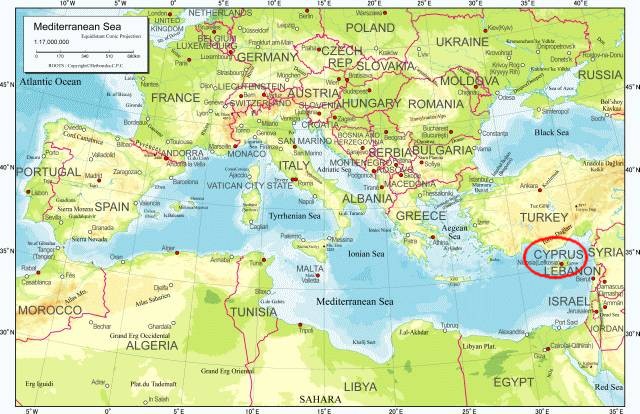
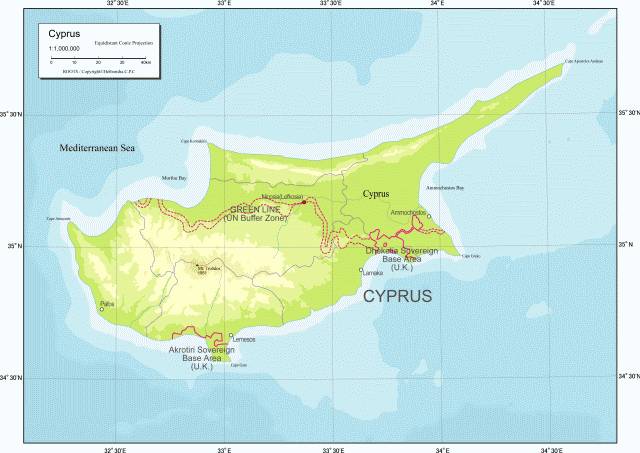
あまり知られていないが,キプロスはヨーロッパでは数少ない ESL (English as a Second Language) 地域の1つであり,英連邦にも所属している(cf. 「#4474. 世界の ESL 地域の概観」 ([2021-07-27-1]),「#1676. The Commonwealth of Nations」 ([2013-11-28-1])).ただし,「#177. ENL, ESL, EFL の地域のリスト」 ([2009-10-21-1]) では EFL (English as a Foreign Language) 地域と分類されており,分類の微妙な問題が関わっているようだ.いずれにせよ,McArthur (277) に "English widely used" とある通り,社会的に広く英語が用いられている状況には変わりなさそうだ.
ちなみに,地中海地域では,ほかにマルタ (Malta) とジブラルタル (Gibraltar) がESL地域である(cf. 「#2228. マルタの英語事情 (1)」 ([2015-06-03-1]),「#2229. マルタの英語事情 (2)」 ([2015-06-04-1]),「#2920. Gibraltar English」 ([2017-04-25-1])).
キプロスの言語事情,とりわけ英語使用の実情については詳しく調べていない.歴史的背景,政治情勢,民族構成,言語事情ともに複雑な社会のようである.今後,関心を寄せていきたい.
・ McArthur, Tom, ed. The Oxford Companion to the English Language. Oxford: OUP, 1992.
2021-11-29 Mon
■ #4599. 南部アフリカの英語地域 [esl][south_africa][africa][map]
日本政府は,新型コロナウィルスの新たな変異株「オミクロン株」の今後の拡大に対する懸念から,南部アフリカの国々に水際強化策を適用し始めた.具体的には,南アフリカ共和国,ナミビア,ジンバブエ,ボツワナ,レソト,エスワティニ,モザンビーク,マラウイ,ザンビアの9カ国からの帰国者には,入国後10日間の待機が求められることになるという(cf. 「#3289. Swaziland が eSwatini に国名変更」 ([2018-04-29-1])).
アフリカのこの一角は,英語(史)に引きつけていえば,重要なESL地域を構成している.南アフリカ共和国を除けば,多くの日本人にとって,なじみの薄い国々が多いだろう.周辺の地図もあまり見慣れていないのではないか.(C)ROOTS/Heibonsha.C.P.C より,南部アフリカの地図を掲載しておきたい.
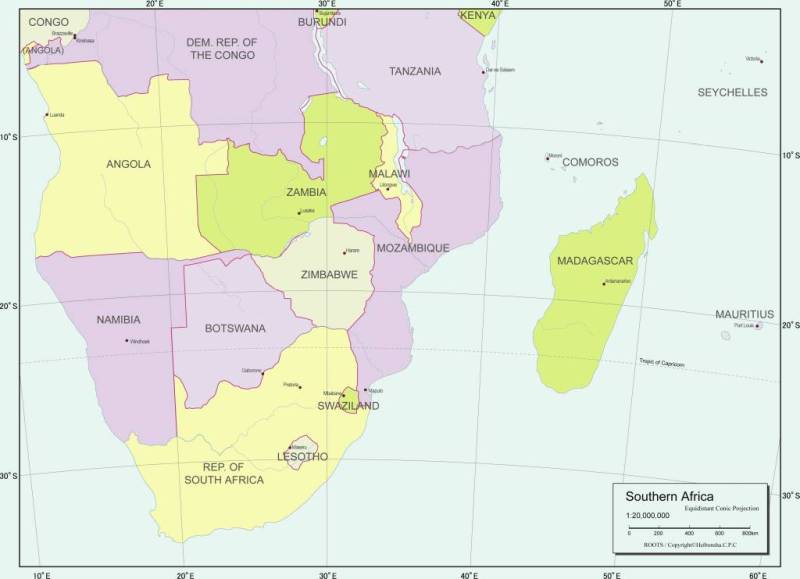
今回の水際強化策の対象となっている9カ国についていえば,ポルトガル語を公用語としているモザンビークを除いて,すべての国が英語を公用語(少なくとも公用語の1つ)として採用している(アフリカにおける英語公用語事情は「#3290. アフリカの公用語事情」 ([2018-04-30-1]) を参照).確かにこの地域の英語話者人口は多く,「#2472. アフリカの英語圏」 ([2016-02-02-1]) の人口統計を参照すると,数千万人という規模で存在することがわかる.世界的な英語地域の1つといってよい.
南部アフリカの英語化の歴史は,イギリスによる植民地化の歴史と連動している.南アフリカ共和国の英語化の淵源は他国に比べて早く18世紀末にさかのぼるが,他国も19世紀後半にはその流れに巻き込まれることになった.多くが第二次世界大戦後の20世紀半ば以降に独立を果たしたが,旧宗主国の言語である英語が威信ある言語として公用語に採用され,現在に至る.
南アフリカ共和国と英語の接触の歴史は複雑で,これまでも「#343. 南アフリカ共和国の英語使用」 ([2010-04-05-1]),「#407. 南アフリカ共和国と Afrikaans」 ([2010-06-08-1]),「#408. South African English と American English の変種構成の類似」 ([2010-06-09-1]),「#1703. 南アフリカの植民史と国旗」 ([2013-12-25-1]),「#3291. 11の公用語をもつ南アフリカ共和国」 ([2018-05-01-1]) などで紹介してきたので,そちらをどうぞ.
2021-09-04 Sat
■ #4513. indigenised Englishes と English creoles の違いは程度の問題? [esl][creole][variety][world_englishes][new_englishes][language_shift][contact]
歴史的にいえばアイルランド英語やインド英語のような "indigenised Englishes" は,基層言語と英語との言語接触および言語交替 (language_shift) の結果として生じた言語変種であり,英語との遺伝的な関係が保たれているとされる.一方,スリナムの Saramaccan のような "English creoles" は,英語との言語接触は前提とされているが,語彙提供言語である英語とは直接の遺伝的な関係のない言語変種とされる (cf. 「#463. 英語ベースのピジン語とクレオール語の一覧」 ([2010-08-03-1])) .
上記は indigenised Englishes と English creoles を対比させる際の従来の説明の仕方である.要するにクレオール語を言語接触の例外的なケースととらえる立場だ.代表的な論者として Thomason and Kaufman を挙げておこう.
しかし,近年では indigenised Englishes と English creoles の違いは,従来の見解が主張するような本質の違いではなく,程度の問題にすぎないのではないかという見方が広がってきている.そのような見方を採用する Winford (196) の説明に耳を傾けよう.
This recognition has led to a growing rapport between the study of the New Englishes and the study of English-lexicon creoles in the last couple of decades. It has given impetus to an earlier tradition of research concerned with the relationship between the two types of contact Englishes, which dates back to the 1980s . . . . The links between the two fields have more recently been reaffirmed in the work of scholars . . . . It is now generally acknowledged that the creation of the New Englishes shares a great deal in common with creole formation, with regard to both the socio-historical circumstances and the processes of change that were involved. The challenge facing us is to show how these two dimensions of language shift---the socio-historical and the linguistic---interact in the emergence of contact varieties. On the one hand, the diversity of outcomes that resulted from the spread of English to various colonies provides support for Thomason and Kaufman's claim that 'it is the sociolinguistic history of the speakers, and not the structure of their language, that is the primary determinant of the linguistic outcome of language contact' (1988: 35). At the same time, the emergence and evolution of contact Englishes supports the view that different outcomes are also constrained by the same principles and processes of change that operate in shift situations generally. All of this suggests that the division between 'indigenized English' and 'creoles' is essentially an artificial one, since we find diversity within each group and significant overlap between the two.
Winford にとっては,indigenised Englishes と English creoles の違いは程度の問題であり,引用の最後にある通り,人工的な区分にすぎないようだ.Winford はこの1節の後,Schneider の "Dynamic Model" を参照して議論を続けていく.このモデルについては「#4497. ポストコロニアル英語変種に関する Schneider の Dynamic Model」 ([2021-08-19-1]) を参照.
・ Winford, Donald. "World Englishes and Creoles." Chapter 10 of The Oxford Handbook of World Englishes. Ed. by Markku Filppula, Juhani Klemola, and Devyani Sharma. New York: OUP, 2017. 194--210.
・ Thomason, Sarah Grey and Terrence Kaufman. Language Contact, Creolization, and Genetic Linguistics. Berkeley: U of California P, 1988.
2021-08-15 Sun
■ #4493. 世界の英語変種の整理法 --- Mesthrie and Bhatt の12タイプ [model_of_englishes][world_englishes][new_englishes][variety][pidgin][creole][esl][efl][enl]
昨日の記事「#4492. 世界の英語変種の整理法 --- Gupta の5タイプ」 ([2021-08-14-1]) に引き続き,世界の英語変種の整理法について.今回は World Englishes というズバリの本を著わした Mesthrie and Bhatt (3--10) による12タイプへの分類を紹介したい.昨日と同様,Schneider (44) を経由して示す.
(a) Metropolitan standards (i.e. the "respected mother state's" norm as opposed to colonial offspring, i.e. in our case British English and American English as national reference forms).
(b) Colonial standards (the standard forms of the former "dominions," i.e. Australian, New Zealand, Canadian, South African English, etc.).
(c) Regional dialects (of Britain and North America, less so elsewhere in settler colonies).
(d) Social dialects (by class, ethnicity, etc.; including, e.g. Broad, General and Cultivated varieties in Australia, African American Vernacular English, and others).
(e) Pidgin Englishes (originally rudimentary intermediate forms in contact, and nobody's native tongue; possibly elaborated in complexity, e.g. West African Pidgin Englishes).
(f) Creole Englishes (fully developed but highly structured, hence of questionable relatedness to the lexifier English; e.g. Jamaican Creole).
(g) English as a Second Language (ESL) (postcolonial countries where English plays a key role in government and education; e.g. Kenya, Sri Lanka).
(h) English as a Foreign Language (EFL) (English used for external and international purposes; e.g. China, Europe, Brazil).
(i) Immigrant Englishes (developed by migrants to an English-dominant country; e.g. Chicano English in the United States)).
(j) Language-shift Englishes (resulting from the replacement of an ancestral language by English; possibly, like Hiberno English, becoming a social dialect in the end).
(k) Jargon Englishes (unstable pre-pidgins without norms and with great individual variation, e.g. South Seas Jargon in the nineteenth century)
(l) Hybrid Englishes (mixed codes, prestigious among urban youths; e.g. "Hinglish" mixing Hindi and English).
英語(使用)の歴史,地位,形式,機能の4つのパラメータを組み合わせた分類といえる.実際に存在する(した)ありとあらゆる英語変種を網羅している感がある.ただし,水も漏らさぬ分類というわけではない.この分類では,複数のカテゴリーにまたがって所属してしまうような英語変種もあるのではないか.
・ Schneider, Edgar W. "Models of English in the World." Chapter 3 of The Oxford Handbook of World Englishes. Ed. by Markku Filppula, Juhani Klemola, and Devyani Sharma. New York: OUP, 2017. 35--57.
・ Mesthrie, Rajend and Rakesh M. Bhatt. World Englishes: The Study of New Linguistic Varieties. Cambridge: CUP, 2008.
2021-07-27 Tue
■ #4474. 世界の ESL 地域の概観 [esl][new_englishes][world_englishes][variety]
世界のいくつかの国・地域には,英語非母語話者であるが,国内の公用語,教育の言語,共通語などとして広く英語を用いている人々がいる.このような国・地域は ESL (English as a Second Language) 地域と呼ばれている.実は ESL 地域は,おそらく多くの読者が思っている以上に,世界中に広く分布している.ここで Trudgill and Hannah (127--28) に依拠して世界中の ESL 地域を概観してみたい.
In the Americas, English is an important second language in Puerto Rico, and also has some second-language presence in Panama. In Europe, in addition to the United Kingdom and the Republic of Ireland where English is spoken natively, English has official status in Gibraltar and Malta and is also widely spoken as a second language in Cyprus. In Africa, there are large communities of native speakers of English in Liberia, South Africa, Zimbabwe and Kenya, but there are even larger communities in these countries of second-language speakers. Elsewhere in Africa, English has official status, and is therefore widely used as a second language lingua franca in Gambia, Sierra Leone, Ghana, Nigeria, Cameroon, Namibia, Botswana, Lesotho, Swaziland, Zambia, Malawi and Uganda. It is also extremely widely used in education and for governmental purposes in Tanzania and Kenya.
In the Indian Ocean, Asian, and Pacific Ocean areas, English is an official language in Mauritius, the Seychelles, Pakistan, India, Singapore, Brunei, Hong Kong, the Philippines, Papua New Guinea, the Solomon Islands, Vanuatu, Fiji, Tonga, Western Samoa, American Samoa, the Cook Islands, Tuvalu, Kiribati, Guam and elsewhere in American-administered Micronesia. It is also very widely used as a second language in Malaysia, Bangladesh, Sri Lanka, the Maldives, Nepal and Nauru. (In India and Sri Lanka, there are also Eurasian native speakers of English.)
これらの地域の多くでは,英米標準英語ではなく,土着化した独自の英語 (indigenised English) が発展してきたし,現在も発展し続けている.これらは "New Englishes" とも称され,世界で話されている英語の多様化に貢献している.
これらの個別の ESL 地域や変種について,本ブログで取り上げてきたものも多いので,esl の記事群,とりわけ以下の記事もご参照を.
・ 「#56. 英語の位置づけが変わりつつある国」 ([2009-06-23-1])
・ 「#177. ENL, ESL, EFL の地域のリスト」 ([2009-10-21-1])
・ 「#215. ENS, ESL 地域の英語化した年代」 ([2009-11-28-1])
・ 「#1589. フィリピンの英語事情」 ([2013-09-02-1])
・ 「#2469. アジアの英語圏」 ([2016-01-30-1])
・ 「#2472. アフリカの英語圏」 ([2016-02-02-1])
・ 「#1591. Crystal による英語話者の人口」 ([2013-09-04-1])
・ Trudgill, Peter and Jean Hannah. International English: A Guide to the Varieties of Standard English. 5th ed. London: Hodder Education, 2008.
2021-07-23 Fri
■ #4470. アジア・アフリカ系の英語にみられるリズムと強勢の傾向 [prosody][phonology][stress][syllable][rhythm][world_englishes][new_englishes][variety][esl][diatone]
現代世界には様々な英語変種があり,ひっくるめて World Englishes や New Englishes と呼ばれることが多い.アジアやアフリカには歴史的な経緯から ESL (English as a Second Language) 変種が多いが,多くのアジア・アフリカ系変種に共通して見られる韻律上の特徴がいくつか指摘されている.ここでは2点を挙げよう.1つは "syllable-timing" と呼ばれるリズム (rhythm) の性質,もう1つは語の強勢 (stress) の位置に関する傾向である.以下 Mesthrie and Bhatt (129) を参照して解説する.
syllable-timing とは,リズムの観点からの言語類型の1つで,英米標準英語がもつ stress-timing に対置されるものである.前者は音節(モーラ)が等間隔で繰り返されるリズムで,日本語やフランス語がこれを示す.後者は強勢が等間隔で繰り返されるリズムで,標準英語やドイツ語がこれを示す(cf. 「#1647. 言語における韻律的特徴の種類と機能」 ([2013-10-30-1]),「#3644. 現代英語は stress-timed な言語だが,古英語は syllable-timed な言語?」 ([2019-04-19-1])).
アジア・アフリカ系の諸言語には syllable-timing をもつものが多く,それらの基層の上に乗っている ESL 変種にも syllable-timing のリズムが持ち越されるということだろう.例えば,インド系南アフリカ英語,黒人系南アフリカ英語,東アフリカ英語,ナイジェリア英語,ガーナ英語,インド英語,パキスタン英語,シンガポール英語,マレーシア英語,フィリピン英語などが syllable-timing を示す.このリズム特徴から派生する別の特徴として,これらの変種には,母音縮約が生じにくく,母音音価が比較的明瞭に保たれるという共通点もある.世界英語の文脈では,syllable-timing のリズムはある意味では優勢といってよい.
これらの変種には,語の強勢に関しても共通してみられる傾向がある.しばしば標準英語とは異なる位置に強勢が置かれることだ.realíse のように強勢位置が右側に寄るものがとりわけ多いが,カメルーン英語などでは adólescence のように左側に寄るものもみられる.また,これらの変種では標準英語の ábsent (adj.) 対 absént (v.) のような,品詞によって強勢位置が移動する現象 (diatone) はみられないという.
全体的にいえば,基層言語の影響の下で韻律上の規則が簡略化したものといってよいだろう.これらは日本語母語話者にとって「優しい」韻律上の特徴であり,今後の展開にも注目していきたい.
・ Mesthrie, Rajend and Rakesh M. Bhatt. World Englishes: The Study of New Linguistic Varieties. Cambridge: CUP, 2008.
2021-07-20 Tue
■ #4467. インド英語は「崩れた英語」か「土着化した英語」か? [variety][esl][indian_english][linguistic_ideology][sociolinguistics]
「#4463. 「印製英語」」 ([2021-07-16-1]) と「#4464. インド英語の歴史の時代区分」 ([2021-07-17-1]) でインド英語 (Indian English) の話題を取り上げた.インド英語に限らないのだが,ESL (English as a Second Language) や EFL (English as a Foreign Language) などの非母語変種を観察すると,当然ながら英米標準英語と異なる言語特徴が多く浮かび上がってくる.このような特徴をどうみるかに関して2つの対立する立場がある.
1つは,非母語話者がモデルとして想定していた英米標準英語を不完全にしか習得できなかったがゆえの言語的逸脱と見る立場である.「崩れた英語」観と呼んでおこう.もう1つは,その特徴を方言的革新ととらえ,それを含めて自立した英語変種であると見る立場だ.「土着化した英語」観と呼んでおきたい.1990--91年,「崩れた英語」観を唱えた Randolph Quirk と「土着化した英語」観を唱えた Braj Kachru の間で論争が起こった,世界英語の研究史における有名な論争である.
いずれの立場が真実を体現しているのだろうか.言語学的な観点からは,各々の言語特徴についてその起源と発達を調査したり,第2言語習得の知見を参照するなどして判断するという方法はあるだろう.しかし,それだけでは問題は解決しそうにない.というのは,これは純粋に言語学的な問題というよりは,言語変種に対する態度,もっといえば言語イデオロギーの問題だからだ.
インド英語研究に関していえば,先の記事で参照してきた Sharma (2089--90) によると,初期の研究はおよそ「崩れた英語」観に立つものが多かったが,最近では「土着化した英語」観に立つものが増えてきているという.英語規範を英米変種など外に仰ぐ "exo-normative" な見方から,規範を自身で内に築き上げる "endo-normative" な見方へ移行してきているようだ.ただし,Sharma (2090) が締めくくりの言葉として "Indian English . . . undergoing a shift from exonormative to endonormative stablization but not as fully nativezed and diversified as native varieties" と述べているように,現在のインド英語は,両極の中間,過渡期的な位置づけにあるというのが事実のように思われる.
・ Sharma, Devyani. "Second-Language Varieties: English in India." Chapter 132 of English Historical Linguistics: An International Handbook. 2 vols. Ed. Alexander Bergs and Laurel J. Brinton. Berlin: Mouton de Gruyter, 2012. 2077--91.
2021-07-17 Sat
■ #4464. インド英語の歴史の時代区分 [indian_english][periodisation][esl][sociolinguistics][hindi]
近年,インドは国際的に存在感を高めているが,それに伴ってインドで用いられる英語,いわゆるインド英語 (Indian English) への注目も高まってきている.このインド英語には意外と長い歴史がある.少なくみても400年ほどはある.
Sharma (2077--85) は,インド英語の歴史を社会言語学的な観点から緩く4つの時代に区分している.簡単に説明を補いながら以下に示そう.
(1) The early presence of English in India (17th--18th century)
エリザベス1世の統治下の1600年,東インド会社が設立され,イギリスとインドの交易が本格的に始まった.この東インド会社は,1858年のイギリスによる直接統治まで拡大を続けることになる.当初は英語とインドの土着言語との接触は実用的なもので,互いの言語を不完全に習得する程度にとどまった.18世紀からはキリスト教学校が設立され,次第に英語使用がインドの人々の間に広がっていった.
(2) Colonial language ideologies (18th--19th century)
1757年,東インド会社軍がプラッシーの戦いでベンガル軍に勝利し,インドに対するイギリスの支配権が確立した.インドの不満は100年後の1857年にインド大反乱として爆発したが,鎮圧された後,翌1858年からはイギリスによる直接統治が始まった.イギリスには,植民地インドに対して2つの対立するイデオロギーがあった.インド土着の言語や文化を黙認する "Orientalist" と,イギリスの言語や文化によってインドを啓蒙しようとする "Anglicist" とである.Orientalist の立場としては,近代英語学の祖と呼ばれる William Jones などがいた.この立場は18世紀中には優勢だったが,19世紀に入ると Anglicist のイデオロギーが強まってきた.そのピークが1835年の Thomas Macaulay の "Minute on Indian Education" に結実しており,そこでは英語の優越性が明確に宣言された.インド人の知識人のなかにも Rammohun Roy のように Anglicist の立場をとるものがいた(cf. 「#3315. 「ラモハン・ロイ症候群」」 ([2018-05-25-1])).この結果,19世紀中,教育,出版,政治における英語使用が着実に増加した.
(3) English and the Independence movement (19th--20th century)
第1次大戦後,イギリス支配からの独立を目指す民族運動が起こった.英語ではなく土着言語の使用を訴えた Mahatma Gandhi の運動に象徴されるように,反英語のイデオロギーが台頭してきた.国民会議派の指導者で後にインドの初代首相となった Nehru も英語への抵抗を呼びかけた.しかし,1947年に独立が成し遂げられると,現実的な観点からは英語を保持せざるを得ないとの論調が復活してきた.以降,インドでの英語使用は継続してきたが,かつてのようなイギリス標準英語への憧憬をもつインド人は減ってきた.
(4) English in independent India: planning and use (20th century)
少なく見積もって415の言語が用いられているインドでは,複雑な多言語使用の様相がみられる.そのなかで22の言語が地域公用語として認められている.中央政府の言語としてはヒンディー語が公用語として,英語が準公用語として指定されている.独立直後には教育言語としてインドの土着言語が厚遇され,英語も当面は必要悪として保持するものの,いずれは使用されなくなっていくべきものと予期されていた.しかし,現実には土着言語間の政治的軋轢という問題があり,非土着言語として中立的な立場にある英語の使用が止まることはなかった.現在ではヒンディー語が優勢ではあるが,若い世代で英語のバイリンガルも普通となってきており,「インドの土着英語」というとらえ方が広がってきている.
・ Sharma, Devyani. "Second-Language Varieties: English in India." Chapter 132 of English Historical Linguistics: An International Handbook. 2 vols. Ed. Alexander Bergs and Laurel J. Brinton. Berlin: Mouton de Gruyter, 2012. 2077--91.
2021-07-16 Fri
■ #4463. 「印製英語」 [waseieigo][loan_translation][indian_english][prefix][esl]
本ブログでは和製英語 (waseieigo) について様々な角度から論じてきた.世界中で英語が第2言語として用いられ,英語要素が各言語に取り込まれている状況下で,和製英語のほかに「○製英語」なるものが観察されたとしても不思議はない.実際,ざっと4世紀にわたって英語と付きあってきたインドで用いられるインド英語 (Indian English) をのぞいてみると「印製英語」というべき表現を多く見つけることができる.Sharma (2087) より,いくつか挙げてみよう.
まず,インドの土着言語の表現を英語要素に移し替えた,翻訳借用 (loan_translation) やなぞり (calquing) による印製英語がある.結っていない髪の毛を指して open hair と呼んだり,「じっと監視・監督する」の意味で to stand on someone's hand という句を用いたりするケースだ.
もととなる表現が土着言語になく,純粋に英語要素を用いて造語したものもある.eve-teasing (セクハラ),prepone (早める,繰り上げる),revert back (メッセージに返信する)などは,いかにも英語らしくみえるが,少なくとも英米標準英語では用いられない.prepone などは傑作というべきで,標準英語の postpone (延期する,繰り下げる)をモデルとして反意の接頭辞で置き換えた語である.標準英語ではなぜ用いられないのだろうかと逆に不思議に思ってしまうほど,形態的にも意味的にも分かりやすい.
インド英語に限らず ESL (English as a Second Language) においては,多かれ少なかれこの種の「○製英語」というべき表現はありふれているに違いない.また,本ブログで繰り返し取り上げてきたように,英語史においても「英製羅語」「英製希語」「英製仏語」の表現が普通に生み出され,使用されてきた(cf. 「#4101. 「和製英語を含む○製△語」の記事セット」 ([2020-07-19-1])).古今東西,言語接触があるところでは「○製△語」の現象は日常茶飯だったのではないか.
なお,「○製英語」を表わす英語の用語は特に存在しない.試しに作ってみると "indigenised English expressions" といったところだろうか.和製英語なら "indigenised English expressions in Japan(ese)",印製英語なら "indiginised English expressions in India(n English)" 辺りはいかがだろう.
・ Sharma, Devyani. "Second-Language Varieties: English in India." Chapter 132 of English Historical Linguistics: An International Handbook. 2 vols. Ed. Alexander Bergs and Laurel J. Brinton. Berlin: Mouton de Gruyter, 2012. 2077--91.
2018-04-29 Sun
■ #3289. Swaziland が eSwatini に国名変更 [map][official_language][history][esl]
アフリカ南部,南アフリカ共和国とモザンビークに囲まれた内陸国の Swaziland (スワジランド)が,国王 (King Mswati III) の発議により,国名を eSwatini (エスワティニ)に変えることになったという(BBCの記事を参照).
この国は「アフリカのスイス」とも称される高原国で,人口約130万人を擁する.人口の約90%がバントゥー系のスワジ族で,スワジ語(スワティ語; Swazi, Swati)を話す.公用語はスワジ語とともに英語が採用されている.19世紀より,イギリス領ケープ植民地やボーア人からの圧力を受け,それぞれの保護下・統治下に入ったが,ボーア戦争後の1902年に正式にイギリス高等弁務官領となった.そこでは伝統的な政治体制が据え置かれ,国王も存続した.1960年代のアフリカ諸国の独立に刺激を受け,1968年にスワジランド王国として独立し,ソブフザ2世を頂く立憲君主国となった.1986年,後継者争いを経て,ムスワティ3世が即位し,絶対君主制を敷きつつ現在に至る.英連邦に加盟している(「#1676. The Commonwealth of Nations」 ([2013-11-28-1])).歴史的には南アへの依存度が高かったが,独立期以来,経済が発展し,依存度は低くなってきたという.HIV感染率が世界一高いなど深刻な問題を抱えている国でもある.
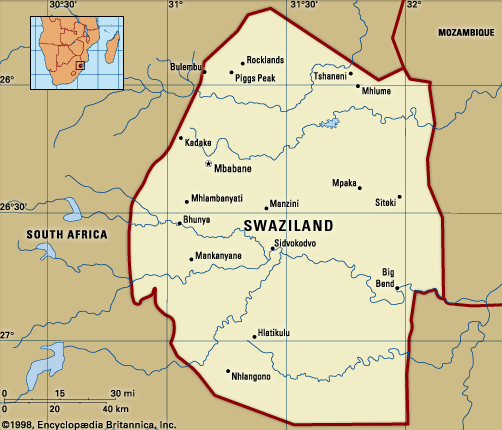
英語との関係でいえば,英語が公用語の1つとして採用されているので,ESL国である.「#2472. アフリカの英語圏」 ([2016-02-02-1]) で示したように,英語を用いる人口は5万人ほどいると推計されている.その英語変種は,「#1919. 英語の拡散に関わる4つの crossings」 ([2014-07-29-1]) で触れた通り,「ESL と EFL の中間的な」変種とされる.言語事情については,Ethnologue より Swaziland を参照.
また,この国家については,BBC より Swaziland country profile や Swaziland chronological profile などを参照.
関連の深い隣国,南アフリカ共和国の英語事情については,「#343. 南アフリカ共和国の英語使用」 ([2010-04-05-1]),「#407. 南アフリカ共和国と Afrikaans」 ([2010-06-08-1]),「#1703. 南アフリカの植民史と国旗」 ([2013-12-25-1]) をどうぞ.
2017-09-11 Mon
■ #3059. ベンガル語の必修化を巡るダージリンのストライキ [india][sociolinguistics][esl][official_language]
紅茶の名産地であるインド北東部,ヒマラヤ山脈南麓のダージリン地方 (Darjeeling) で大規模なストライキが3ヶ月続いている.すべての茶園が閉まっており,最盛期の6月の生産量は昨年同期の1割ほどにとどまり,損失額は45億ルピー(約76億円)だという.ストに伴う暴動で住民に死亡者も出ている.
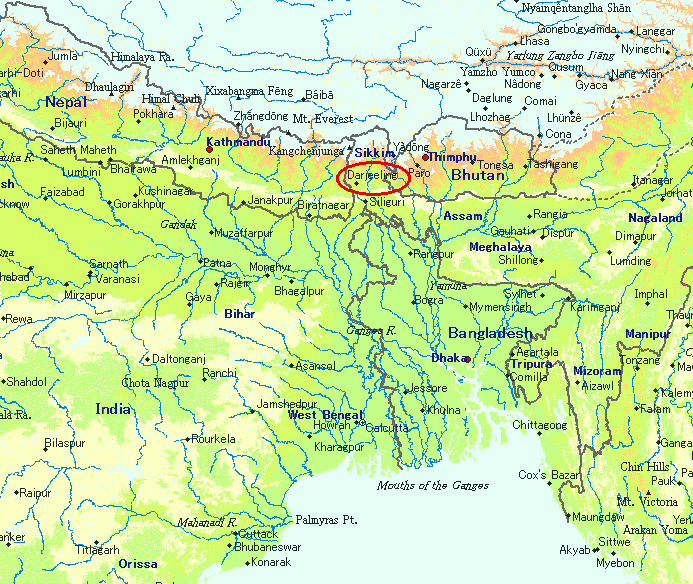
ストの背景には民族と言語の問題がある.ネパール国境に近いダージリン地方にはネパール語 (Nepal) を母語とするネパール系住民が多く,西ベンガル州から独立して「ゴルカランド州」を建てようとする運動が1980年代から続いている.そこへ今年5月,西ベンガル州政府が州の公用語であるベンガル語 (Bengali) の教育を義務化すると公表した.ダージリンでは主にネパール語や英語が教えられており,住民たちはこのベンガル語の強制に反発し,6月より大規模なストを始めたというわけだ.州政府は必修化を撤回したが,ストは収まっていない.
このエリアが,民族,言語に関して込み入った事情のある地域であることは明らかである.本ブログより,関連する情報をいくつか提示しよう.
(1) 「#3009. 母語話者数による世界トップ25言語(2017年版)」 ([2017-07-23-1]) によると,ベンガル語は2億4200万人の話者を擁する世界第6位の大言語である.
(2) ダージリンの住民と関係の深いネパールでは,ネパール語と並んで英語も広く使われている.「#2469. アジアの英語圏」([2016-01-30-1]) でみたように,ネパール国内では700万人ほどが英語を第2言語 (ESL = English as a Second Language) として話しており,「#56. 英語の位置づけが変わりつつある国」 ([2009-06-23-1]) の1つである.
(3) インドの言語多様性はよく知られている.「#401. 言語多様性の最も高い地域」 ([2010-06-02-1]) でみたとおり,445ほどの言語を擁する.言語多様性指数は 0.940 と著しく高い.
2017-06-07 Wed
■ #2963. Palmerston English [esl][world_englishes][map][variety][history]
ニュージーランドの北東約3000kmに浮かぶクック諸島 (Cook Islands) は,ニュージーランドと自由連合を組む自治国である.国名は,Captain Cook が1773年にこの諸島に上陸したことにちなむ.1888年にイギリスの属領となった後,1901年にはニュージーランドの属領へ移行し,1965年に内政自治権を獲得した.1万7千人程度の人口があり,その8割程度がポリネシア系のクック諸島マオリ族である.クック諸島マオリ語と英語がともに公用語となっている.以下,地図を掲載(広域図は「#2215. Niue,英語を公用語としてもつ最小の国(最新版)」 ([2015-05-21-1]) を参照).
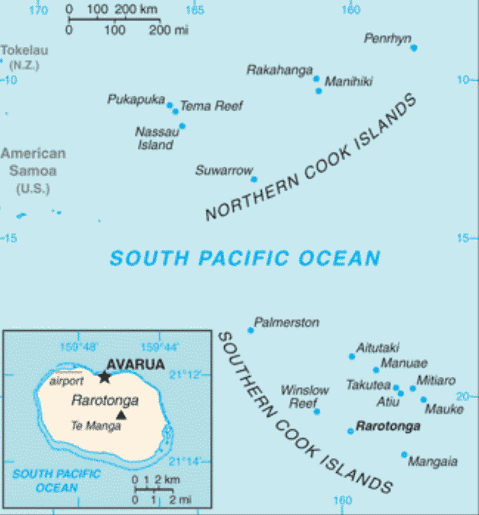
首都 Avarua のある Rarotonga 島の北西400kmほどのところに,Palmerston Island という島が浮かんでいる.ここでは,成立過程のよく知られている Palmerston English と呼ばれる英語変種が話されている.Trudgill (100) の記述を借りよう.
Palmerston English is spoken on Palmerston Island (Polynesian Avarau), a coral atoll in the Cook Islands about 250 miles northwest of Rarotonga, by descendants of Cook Island Maori and English speakers. William Marsters, a ship's carpenter and cooper from Gloucestershire, England, came to uninhabited Palmerston Atoll in 1962. He had three wives, all from Penrhyn/Tongareva in the Northern Cook Islands. He forced his wives, seventeen children and numerous children to use English all the time. Virtually the entire population of the island today descends from the patriarch. Palmerston English has some admixture from Polynesian but is probably best regarded as a dialectal variety of English rather than a contact language.
その他,クック諸島の基本情報は,CIA: The World Factbook による Cook Islandsや外務省のクック諸島基礎データを参照.
・ Trudgill, Peter. A Glossary of Sociolinguistics. Oxford: Oxford University Press, 2003.
2016-02-02 Tue
■ #2472. アフリカの英語圏 [demography][world_englishes][new_englishes][esl][map][timeline][pidgin][creole][standardisation][africa]
「#2469. アジアの英語圏」([2016-01-30-1]) に引き続き,今回はアフリカの英語圏の人口統計について.Gramley (307, 309, 311) の "Anglophone Southern African countries", "Anglophone West African countries", "Anglophone East African countries" の表を掲載しよう. * *
| country | significant UK contact | colonial status | independence | total population | English speakers | |
|---|---|---|---|---|---|---|
| percentage | total number | |||||
| Botswana | 19th century | 1885 | 1966 | 1,640,000 | --38% | 630,000 |
| Lesotho | protectorate | 1966 | 1,800,000 | --28% | 500,000 | |
| Malawi | 1878 | 1891 | 1964 | 13,000,000 | --4% | 540,000 |
| Namibia | 1878 | 1920 (S. Afr.) | 1990 | 1,800,000 | --17% | > 300,000 |
| South Africa | 1795 | 1795 | 1910 | 47,850,000 | > 28% | 13,700,000 |
| Swaziland | 1894 | 1902 (UK) | 1968 | 1,140,000 | --4.4% | 50,000 |
| Zambia | 1888 | 1924 | 1953, 1964 | 13,000,000 | --15% | --2,000,000 |
| Zimbabwe | 1890 | 1923 | 1953, 1980 | 13,300,000 | --42% | 5,550,000 |
| Cameroon | 1914 | 1916 | 1960 | 18,500,000 | --42% | 7,700,000 |
| Gambia | 1661, 1816 | 1894 | 1965 | 1,700,000 | --2.3% | 40,000 |
| Ghana (formerly gold coast) | 1824, 1850 | 1874, 1902 | 1957 | 23,480,000 | --6% | 1,400,000 |
| Liberia | USA 1822 | none | 1847 | 3,750,000 | --83% | 3,100,000 |
| Nigeria | 1851 | 1884, 1900 | 1960 | 148,000,000 | --53% | 79,000,000 |
| Sierra Leone | 1787 | 1808 | 1961 | 5,800,000 | --83% | 4,900,000 |
| Kenya | 1886 | 1895, 1920 | 1963 | 39,000,000 | --9% | 2,700,000 |
| Tanzania | 1880s | 1890, 1920 | 1961 | 42,000,000 | --11% | 4,000,000 |
| Uganda | 1860s | 1888, 1890 | 1962 | 31,000,000 | --10% | 2,500,000 |
South Africa や Nigeria の存在感が群を抜いていることがわかる.
これまで一覧してきたアフリカやアジアの英語圏で用いられている英語は,実際上ほぼすべて ESL と考えてよい.南アフリカでは一部 ENL が行われていたり,他の地域でクレオール英語が行われているところもあるが,現実的には ESL 地域と呼ぶにふさわしい.これらの多くの国・地域の英語使用について共通しているのは,その土地独自の英語が "endonormative" な方向で社会的な地位を得て,制度化しつつあることである.Gramley (306) は次のように解説している.
In most of these countries a kind of indigenization or nativization is currently taking place, a process in which the domains of the language are expanding and in which increasingly endonormative standards are becoming established for usages which were once stigmatized as mistakes. This is opening the way to wider use of English in creative writing and to the institutionalization of local forms in schools, the media, and government . . . . English may well still be far from being a language of the emotions among the vast majority of its users; indeed, the institutionalization of English may be making it ever more difficult for those without English to close the social gap between "the classes and the masses." All the same, English is more and more firmly a part of everyday linguistic experience.
これら "New Englishes" の使用に関する歴史社会言語学的な事情については「#1255. "New Englishes" のライフサイクル」 ([2012-10-03-1]) を参照されたい.また,アフリカの英語圏のいくつかの地域については,「#343. 南アフリカ共和国の英語使用」 ([2010-04-05-1]),「#412. カメルーンの英語事情」 ([2010-06-13-1]),「#413. カメルーンにおける英語への language shift」 ([2010-06-14-1]),「#514. Nigeria における英語の位置づけ」 ([2010-09-23-1]) で取り上げてきたので,そちらをご覧ください.Gramley の英語史概説書のコンパニオンサイトより,こちらの解説PDFファイルのなかの "colonial expansion into West Africa" の記事も有用.
・ Gramley, Stephan. The History of English: An Introduction. Abingdon: Routledge, 2012.
2016-01-30 Sat
■ #2469. アジアの英語圏 [demography][world_englishes][new_englishes][esl][map][timeline][efl]
アジアの英語圏については,以下の記事その他で取り上げてきた.
・ 「#177. ENL, ESL, EFL の地域のリスト」 ([2009-10-21-1])
・ 「#215. ENL, ESL 地域の英語化した年代」 ([2009-11-28-1])
・ 「#273. 香港の英語事情」 ([2010-01-25-1])
・ 「#375. 主要 ENL,ESL 国の人口増加率」 ([2010-05-07-1])
・ 「#759. 21世紀の世界人口の国連予測」 ([2011-05-26-1])
・ 「#1589. フィリピンの英語事情」 ([2013-09-02-1])
・ 「#1590. アジア英語の諸変種」 ([2013-09-03-1])
・ 「#1593. フィリピンの英語事情 (2)」 ([2013-09-06-1])
英語の未来を占う上で,アジア英語の話者に関する人口統計は重要な意味をもつ.様々な文献から数字を挙げることができるが,ここでは Gramley (313, 314) の "Anglophone South Asian countries" と "Anglophone Southeast Asian countries" の表をドッキングしたものを示そう. *
| country | significant UK contact | beginning of colonial status | independence | total population | English speakers | |
|---|---|---|---|---|---|---|
| percentage | total number | |||||
| Bangladesh | 1690 | 1858 | 1947 | 162,000,000 | --2% | 3,500,000 |
| India | 1600 | 1858 | 1947 | --1.2 billion | > 20% | > 230,000,000 |
| Nepal | none | 25,000,000 | > 25% | 7,000,000 | ||
| Pakistan | 1857 | 1858 | 1947 | 164,000,000 | --11% | 18,000,000 |
| Sri Lanka | 1796 | 1802 | 1948 | 20,000,000 | --10% | 2,000,000 |
| Singapore | 1819 | 1867 | 1965 | 5,000,000 | --80% | --4,000,000 |
| Hong Kong | 1841 | 1842 | 1997 | 6,900,000 | --36% | 2,500,000 |
| Philippines | USA: 1898 | 1898 | 1946 | 97,000,000 | > 50% | 50,000,000 |
| Malaysia | 1786 | 1795 | 1957, 1963 | 27,000,000 | --27% | 7,400,000 |
英語話者の人口統計という観点からは,インド,パキスタン,バングラデシュの潜在力が群を抜いている.フィリピンも21世紀中にまだまだ伸びてゆくだろう.また,表に掲げられている国・領域はいずれもESL地域であるが,いうまでもなく南・東南アジア,そして極東アジアには別途広大なEFL地域が広がっており,そこでは英語教育が例外なく盛んになっている.実際上および潜在的な英語話者が今世紀中増え続けることは間違いないが,そのなかでアジアは今後の世界の英語とその行方に影響を与え得る一大エリアとなるだろう.日本は,このような近隣の英語を巡る環境の変化に,よく注意を払うことが必要である.
・ Gramley, Stephan. The History of English: An Introduction. Abingdon: Routledge, 2012.
2015-06-04 Thu
■ #2229. マルタの英語事情 (2) [esl][new_englishes][diglossia][bilingualism][sociolinguistics][history]
昨日の記事 ([2015-06-03-1]) に引き続き,マルタの英語事情について.マルタは ESL国であるといっても,インドやナイジェリアのような典型的な ESL国とは異なり,いくつかの特異性をもっている.ヨーロッパに位置する珍しいESL国であること,ヨーロッパで唯一の土着変種の英語をもつことは昨日の記事で触れた通りだが,Mazzon (593) はそれらに加えて3点,マルタの言語事情の特異性を指摘している.とりわけイタリア語との diglossia の長い前史とマルタ語の成立史の解説が重要である.
There are various reasons for the peculiarity of the Maltese linguistic situation: 1) the size of the country, a small archipelago in the centre of the Mediterranean; 2) the composition of the population, which is ethnically and linguistically quite homogeneous; 3) its history previous to the British domination; throughout the centuries, Malta had undergone various invasions, its political history being intimately connected with that of Southern Italy. This link, together with the geographical vicinity to Italy, encouraged the adoption of Italian as a language of culture and, more generally, as an H variety in a well-established situation of diglossia. Italian has been for centuries a very prestigious language throughout Europe, since Italy has one of the best known literary traditions and some of the oldest European universities. Maltese is a language of uncertain origin; it was deeply "restructured" or "refounded" on Semitic lines during the Arab domination, between 870 and 1090 A.D. It has since then followed the same path as other spoken varieties of Arabic, losing almost all its inflections and moving towards analytical types; the close contact with Italian helped in this process, also contributing large numbers of vocabulary items.
現在のマルタ語と英語の2言語使用状況の背景には,シックな言語としての英語への親近感がある.世界の多くのESL地域において,英語に対する見方は必ずしも好意的とは限らないが,マルタでは状況が異なっている.ここには,国民の "integrative motivation" が関与しているという.
The role of this integrative motivation must always be kept in mind in the case of Malta, since the relative cultural vicinity and the process through which Malta became part of the Empire made this case somehow anomalous; many Maltese today simply deny they ever were just a "colony"; young people seem to partake in this feeling and often stress the point that the British never "invaded" Malta: they were invited. There is a widespread feeling that the British never really colonialized the country, they just "came to help"; the connection of the Maltese people with Britain is still quite strong, not only through the British tourists: in many shops and some private houses, alongside the symbols of Catholicism, portraits of the British Royal Family are proudly displayed on the walls. (Mazzon 597)
確かに,マルタはESL地域のなかでは特異な存在のようである.マルタの言語(英語)事情は,社会歴史言語学的に興味深い事例である.
・ Mazzon, Gabriella. "A Chapter in the Worldwide Spread of English: Malta." History of Englishes: New Methods and Interpretations in Historical Linguistics. Ed. Matti Rissanen, Ossi Ihalainen, Terttu Nevalainen, and Irma Taavitsainen. Berlin: Mouton de Gruyter, 1992. 592--601.
2015-06-03 Wed
■ #2228. マルタの英語事情 (1) [esl][new_englishes][bilingualism][diglossia][language_planning][sociolinguistics][history]
マルタ共和国 (Republic of Malta) は,「#177. ENL, ESL, EFL の地域のリスト」 ([2009-10-21-1]),「#215. ENS, ESL 地域の英語化した年代」 ([2009-11-28-1]) で触れたように,ヨーロッパ内では珍しい ESL (English as a Second Language) の国である.同じく,ヨーロッパでは珍しく英連邦に所属している国でもあり (cf. 「#1676. The Commonwealth of Nations」 ([2013-11-28-1])),さらにヨーロッパで唯一といってよいが,土着変種の英語が話されている国でもある.マルタと英語との緊密な関わりには,1814年に大英帝国に併合されたという歴史的背景がある (cf. 「#777. 英語史略年表」 ([2011-06-13-1])).地理的にも歴史的にも,世界の他の ESL 地域とは異なる性質をもっている国として注目に値するが,マルタの英語事情についての詳しい報告はあまり見当たらない.関連する論文を1つ読む機会があったので,それに基づいてマルタの英語事情を略述したい.
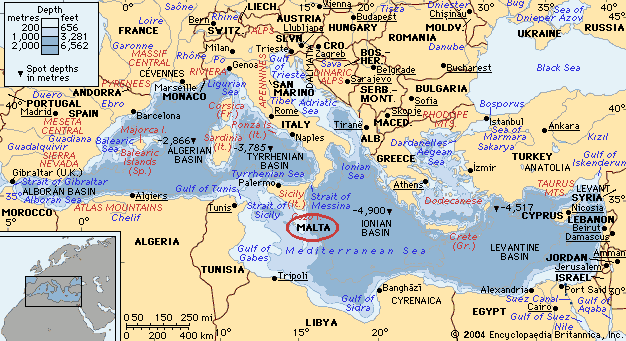 | 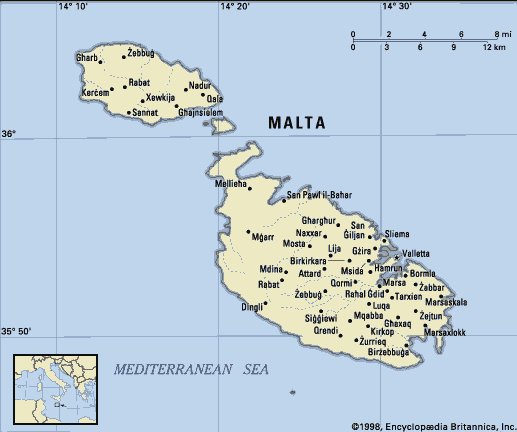 |
マルタは地中海に浮かぶ島嶼国で,幾多の文明の通り道であり,地政学的にも要衝であった.Ethnologue の Malta によると,国民42万人のほとんどが母語としてマルタ語 (Maltese) を話し,かつもう1つの公用語である英語も使いこなす2言語使用者である.マルタ語は,アラビア語のモロッコ口語変種を基盤とするが,イタリア語や英語との接触の歴史を通じて,語彙の借用や音韻論・統語論の被ってきた著しい変化に特徴づけられる.この島国にとって,異なる複数の言語の並存は歴史を通じて通常のことであり,現在のマルタ語と英語との広い2言語使用状況もそのような歴史的文脈のなかに位置づける必要がある.
1814年にイギリスに割譲される以前は,この国において社会的に威信ある言語は,数世紀にわたりイタリア語だった.法律や政治など公的な状況で用いられる「高位の」言語 (H[igh Variety]) はイタリア語であり,それ以外の日常的な用途で用いられる「低位の」言語 (L[ow Variety]) としてのマルタ語に対立していた.社会言語学的には,固定的な diglossia が敷かれていたといえる.19世紀に高位の言語がイタリア語から英語へと徐々に切り替わるなかで,一時は triglossia の状況を呈したが,その後,英語とマルタ語の diglossia の構造へと移行した.しかし,20世紀にかけてマルタ語が社会的機能を増し,現在までに diglossia は解消された.現在の2言語使用は,固定的な diglossia ではなく,社会的に条件付けられた bilingualism へと移行したといえるだろう(diglossia の解消に関する一般的な問題については,「#1487. diglossia に対する批判」 ([2013-05-23-1]) を参照).
現在,マルタからの移民は,英語への親近感を武器に,カナダやオーストラリアなどへ向かうものが多い.新しい中流階級のエリート層は,上流階級のエリート層が文化語としてイタリア語への愛着を示すのに対して,英語の使用を好む.マルタ語自体の価値の相対的上昇とクールな言語としての英語の位置づけにより,マルタの言語史は新たな段階に入ったといえる.Mazzon (598) は,次のように現代のマルタの言語状況を総括する.
[S]ince the year 1950, the most important steps in language policy have been in the direction of the promotion of Maltese and of the extension of its use to a number of domains, while English has been more and more widely learnt and used for its importance and prestige as an international language, but also as a "fashionable, chic" language used in social gatherings and as a status symbol . . . .
・ Mazzon, Gabriella. "A Chapter in the Worldwide Spread of English: Malta." History of Englishes: New Methods and Interpretations in Historical Linguistics. Ed. Matti Rissanen, Ossi Ihalainen, Terttu Nevalainen, and Irma Taavitsainen. Berlin: Mouton de Gruyter, 1992. 592--601.
Powered by WinChalow1.0rc4 based on chalow